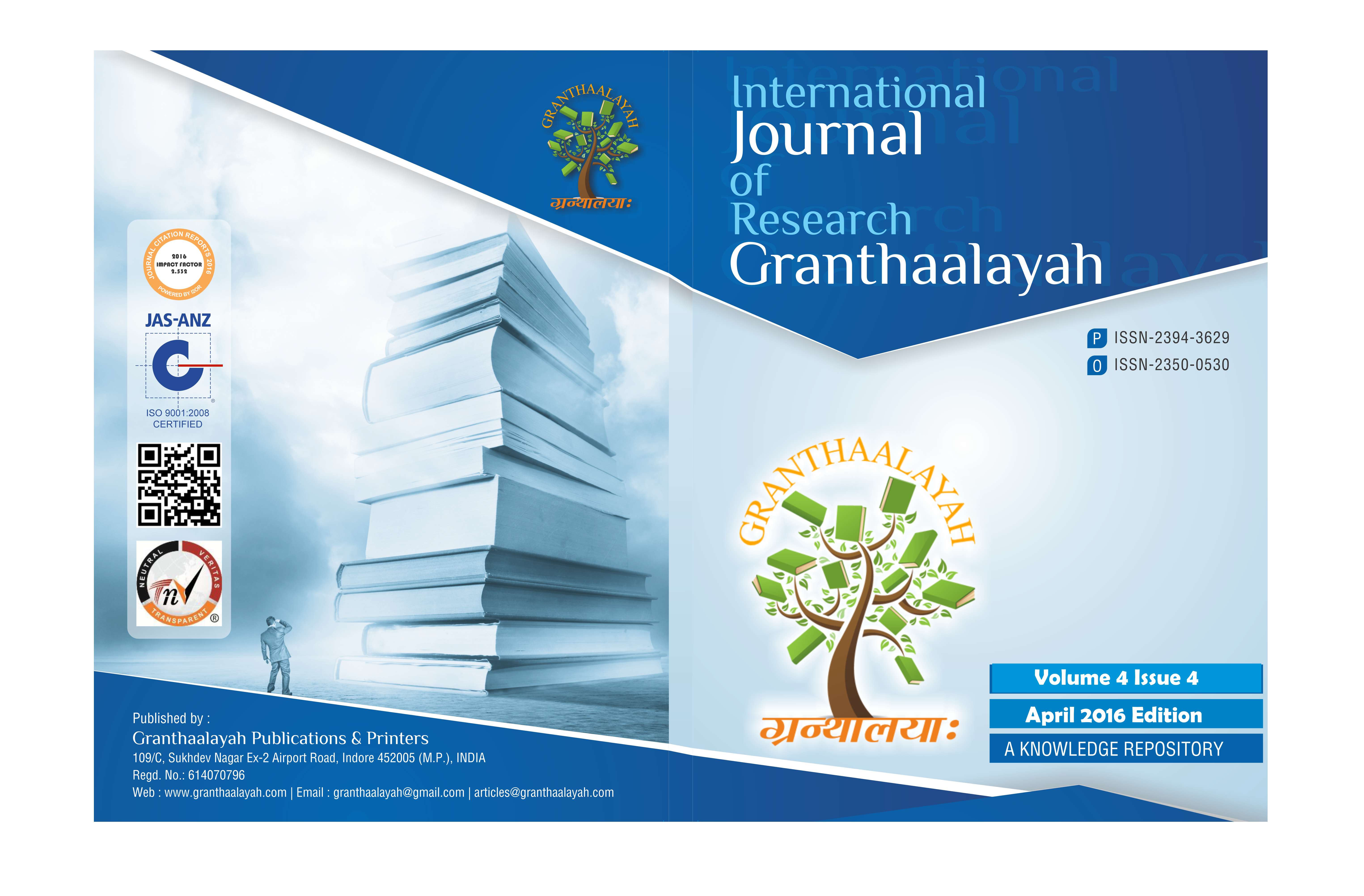EFFECT OF LEAVES EXTRACT OF IPOMOEA CAIRICA ON CHLOROPHYLL AND CAROTENOID IN PARTHENIUM HYSTEROPHOROUS L.
DOI:
https://doi.org/10.29121/granthaalayah.v4.i4.2016.2761Keywords:
Ipomoea Cairica, Partheniumhysterophorous, Chlorophyll A, Chlorophyll B, Carotenoids, Total ChlorophyllAbstract [English]
Photosynthetic effects of the leaves extracts from Ipomoea cairica on Partheniumhysterophorus L were studied. Ipomoea cairica dried leaf powder (20g) was dissolved in distilled water (200ml) for foliar application. The seedlings were maintained under natural condition in Insect free net house. The experiment was carried out to analyze the effects of Ipomoea cairica leaves extract by measuring chlorophyll ‘a’, chlorophyll ‘b’, total chlorophyll and carotenoid contents in Parthenium. The experimental plants were sprayed 20 days after emergence and control plants were maintained by a simultaneous spray of distilled water. Leaves of Partheniumhysterophorus were collected at 5 days interval following the foliar application of Ipomoea cairica leaves extract up to 15th day. Results showed that Chlorophyll (total chlorophyll, chlorophyll a and b) and carotenoid content was adversely affected as the duration of Ipomoea cairica leaves extract increased. This potential of Ipomoea cairica can be used as herbicide to control noxious weed Partheniumhysterophorous.
Downloads
References
Kuva, M.A., Ferraudo, A.S.; Pitelli, R.A., Alves, P.L.C.A. & Salgado, T.P.Weed plant infestation patterns in raw sugarcane agricultural systems. Planta Daninha 26, 2008, 549-557 DOI: https://doi.org/10.1590/S0100-83582008000300010
Vyvyan, J.A. Allelochemicals as leads for new herbicides and agrochemicals. Tetrahedron 58, 2002,1631-1646 DOI: https://doi.org/10.1016/S0040-4020(02)00052-2
Ahn, J.K., Park, H.Y.,Hwang, S.J., Kong, D.S., Chun, S.C., Khan, T.D. & Chung, I.M. Screening of aquatic plant extracts for herbicidal, fungicidal and insecticidal activity. Allelopathy Journal 21, 2008,361-372
Duke, S.O. Dayan, F.E.; Ramagnani, J.G. & Rimando, A.M. 2000. Natural products as sources of herbicides: current status and future trends. Weed Research 40: 99-111. DOI: https://doi.org/10.1046/j.1365-3180.2000.00161.x
Khanh, T.D., Chung, I.M., Tawata, S. & Xuan, T.D. Weed supression by Passiflora edulis and its potential allelochemicals. European Weed Research Society 46, 2006 296-303. DOI: https://doi.org/10.1111/j.1365-3180.2006.00512.x
Srivastava D., Shahi S. and Rai R (2015)Allelopathic effects of Ipomoea cairica (L) on noxious weed PartheniumhysterophorusLinn.International Journal of Current Research in Life Sciences .4( 12) 2015, 489-491.
Llamas, K.A.Tropical Flowering Plants: a guide to identification and cultivation 1. ed. Portland, Timber Press. 2003.
Ma, R.J., Wang, N.L., Zhu, H., Guo, S.J. & Chen, D.S.Isolation and identification of allelochemicals from invasive plant Ipomoea cairica. Allelopathy Journal 24, 2009, 77-84.
Takao, L.K., Nepomuceno Ribeiro J.P. and Salgueiro Lima M.I. Allelopathic effects of Ipomoea cairica (L.) Sweet on crop weeds Acta Botanica Brasilica 25(4), 2011, 858-864. DOI: https://doi.org/10.1590/S0102-33062011000400012
Arnon, D.I. Copper enzymes in isolated chloroplasts. Plant Physiol, 24, 1949, 1-15. DOI: https://doi.org/10.1104/pp.24.1.1
Jensen. S.L. and Jensen. A. Quantitative determination of carotenoids in photosynthetic tissue. In: Methods in enzymology. (Sampictro A, H.d.) Acad. Press. Xcw York and London. 1971.
Peter J. Ralph. Herbicide toxicity of Halophilaovalis assessed by chlorophyll a fluorescence. Aquatic Botany 66,2000, 141–152. DOI: https://doi.org/10.1016/S0304-3770(99)00024-8
Downloads
Published
How to Cite
Issue
Section
License
With the licence CC-BY, authors retain the copyright, allowing anyone to download, reuse, re-print, modify, distribute, and/or copy their contribution. The work must be properly attributed to its author.
It is not necessary to ask for further permission from the author or journal board.
This journal provides immediate open access to its content on the principle that making research freely available to the public supports a greater global exchange of knowledge.

























